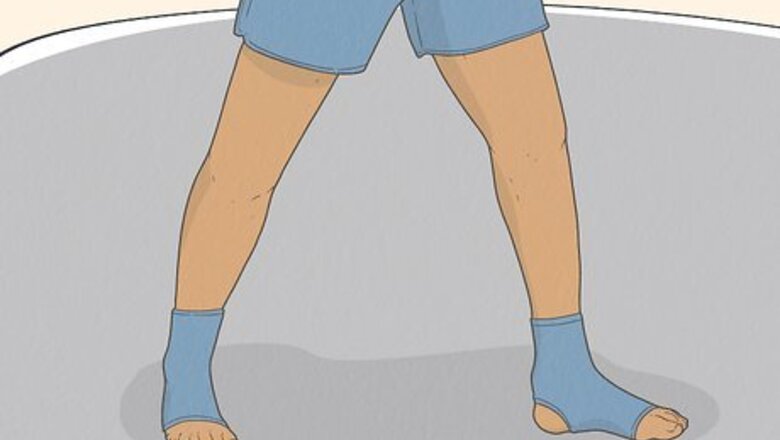
views
Throwing the Kick
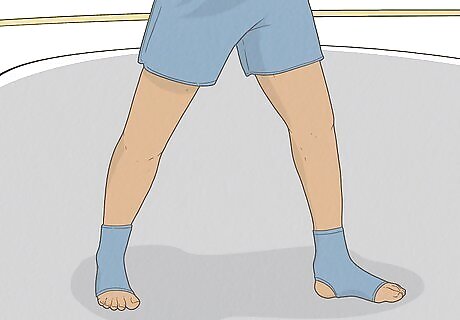
Stand in a regular fighting stance facing your opponent. In most cases, you and your opponent will both have a standard fighting stance, with your right legs back, your hips turned slightly to the right, and your hands up in a boxing position to guard your face. Always enter this stance before throwing a kick for ideal balance and defense. A good fighting stance is important for all MMA and martial arts techniques, so practice this starting position until you can enter it without thinking. Always stay loose in your fighting position. If you’re too stiff, your techniques will be slower and less powerful. If you’re left-handed, you may be more comfortable in a reverse fighting stance, with your left leg back. If your opponent is in a standard, right-handed stance, then it’ll be easier to attack the inside of their front leg rather than the outside.

Step slightly to the left with your front leg to set the kick. The kick’s motion starts in your front leg, which anchors your kicking leg. Turn your toes slightly to the left and take a small step. This shifts your weight to your grounded leg and prepares your body for the kick. Pointing your toes to the left is important for kicking with power. If you keep your toes forward, you won’t be able to follow-through. To stay light on your front foot, balance on the ball of your foot rather than keeping your foot flat. This will give you more balance. If you're using a reverse fighting stance, then turn your right foot to the right instead.
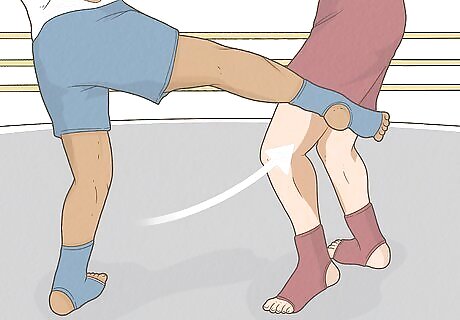
Throw a roundhouse kick aiming for your opponent’s front thigh. Pivot on your front foot and lift your rear leg. Throw your right hip towards your grounded leg to build power. Then snap your rear leg forward to deliver a roundhouse kick to your opponent’s thigh. The thigh is a perfect target for a leg kick because the quad muscle locks up when it’s hit, so you can incapacitate your opponent with a solid kick. The ideal location is a few inches above your opponent’s knee. Keep your grounded leg slightly bent so you stay loose. Some kick boxers also aim for their opponent’s shins, but this wouldn’t be as effective as a solid hit to the thigh. You also risk hurting your leg if you make contact with your opponent’s shin.
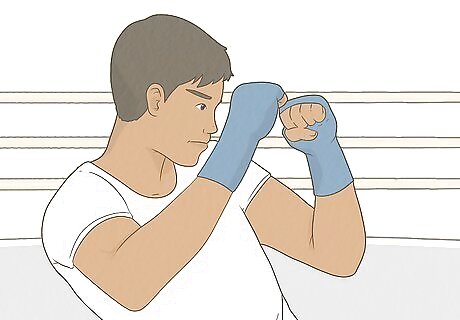
Protect your face with your front hand. Don’t drop both of your hands during the kick or you’ll leave yourself open for a face attack. As you kick, extend your rear arm towards the ground to maintain your balance. Leave your front hand up guarding your face while you kick. You can also tuck your chin a bit so your shoulders defend your face.
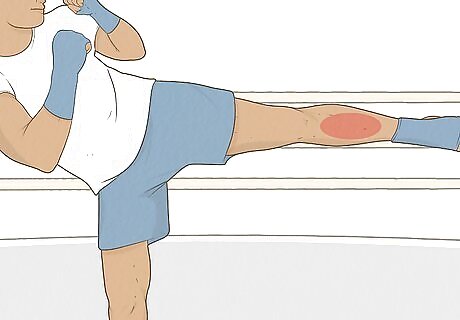
Make contact with your shin just above your ankle. Contrary to what it might look like, you’re not making contact with your foot. Instead, hit your opponent’s thigh with your shin. This makes the kick much more powerful. Kicking with your foot is dangerous because you have many small bones there that could break.
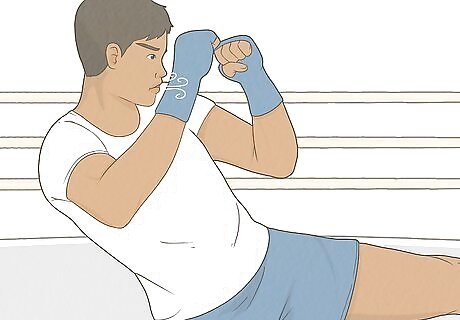
Exhale as you throw the kick to stay loose. Holding your breath during the kick makes you tighten up, which slows the attack. Instead, exhale forcefully just before you fully extend the kick. This releases energy and builds power for the kick.
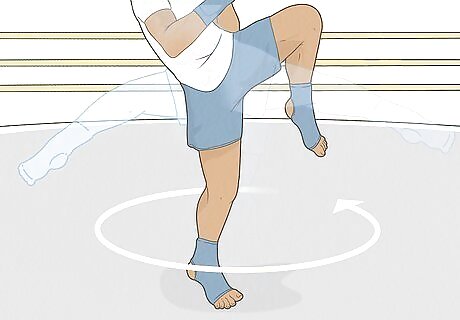
Follow through with a 360-degree spin if you miss. You’ll be off-balance if you miss and try to withdraw your foot. Instead, continue pivoting on your grounded foot and keep your energy moving. Execute a 360-degree spin to get back into your fighting position. You can also try to spin if you make contact. This is a good follow-through that adds power to the kick. If you have trouble executing a spin, try rotating your head first. Turn quickly and look at your opponent, then let your body follow. You’ll get less dizzy this way.

Finish back in your fighting stance. If you miss or your opponent recovers quickly enough, you have to be ready for a counterattack. Always get back into your fighting stance as soon as you finish the kick so you can continue the fight.
Using Different Techniques
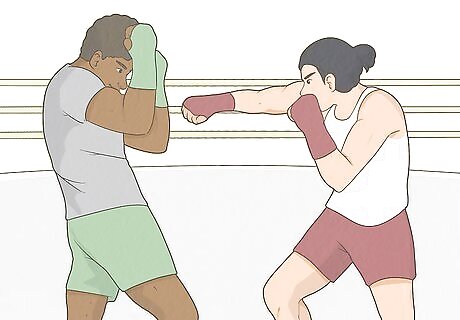
Jab first to confuse your opponent. Kicks on their own are very easy to spot and block. Instead, set your kick up with a quick jab first. Your opponent will be occupied blocking your punch and you can sneak in a leg kick while they’re distracted. You can use a few other hand techniques as well. A jab-cross, where you punch with your front then rear hand, further distracts your opponent. Elbow attacks also work well. For more deception, try throwing a few jabs with no kicks after them. Then, when your opponent doesn’t expect it, follow one of your jabs with a kick.
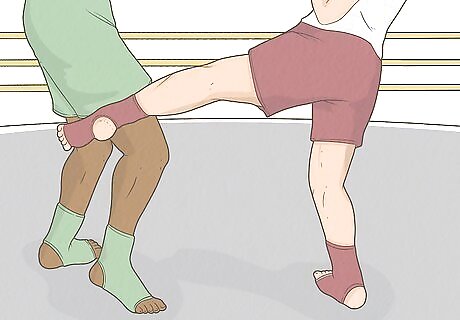
Fake a kick first if your opponent is blocking your kicks. Good fighters can lift their front legs to block your leg kicks. If your opponent is blocking your kicks, try confusing them. Set up your kick and then just lift your rear leg instead of fully kicking. Then when they lower their block, reset your kick quickly and hit their leg as they drop it. This is easier if you add a quick step or hop with your grounded leg. Lift your kicking leg, lower it, then hop slightly with your grounded leg to propel your leg for a new kick.
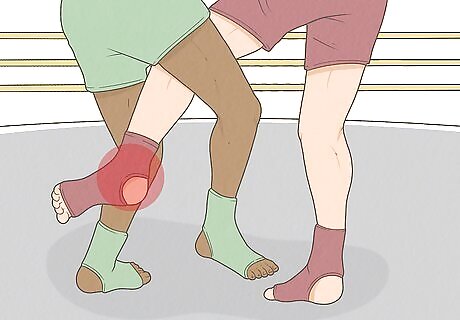
Kick underneath your opponent’s front leg and hit their rear leg. This is another way to get around your opponent’s block. When they lift their front leg to guard against your attack, continue kicking and get underneath their leg. Extend your kick to hit their grounded leg to knock them off-balance. You can make a combination here for a stronger attack. For example, throw a jab to get your opponent off-balance, fake a kick so they lift their front leg, then throw a kick underneath their block to attack their rear leg. Since all your opponent’s weight is on their rear leg, you could seriously hurt someone with this technique. Only use it in a match with a trained opponent.

Fake a kick with your rear leg and then kick with your front leg. To attack from another angle, set up a kick with your rear leg. When your opponent reacts to this, drop your leg quickly and throw the same kick with your front leg instead. This way, you can hit the inside of your opponent’s leg. Use the same roundhouse-style kick when you attack with your other leg. This is the best type of kick for leg attacks. You could also hit your opponent’s rear leg with this attack, since you’re kicking from another angle.




















Comments
0 comment